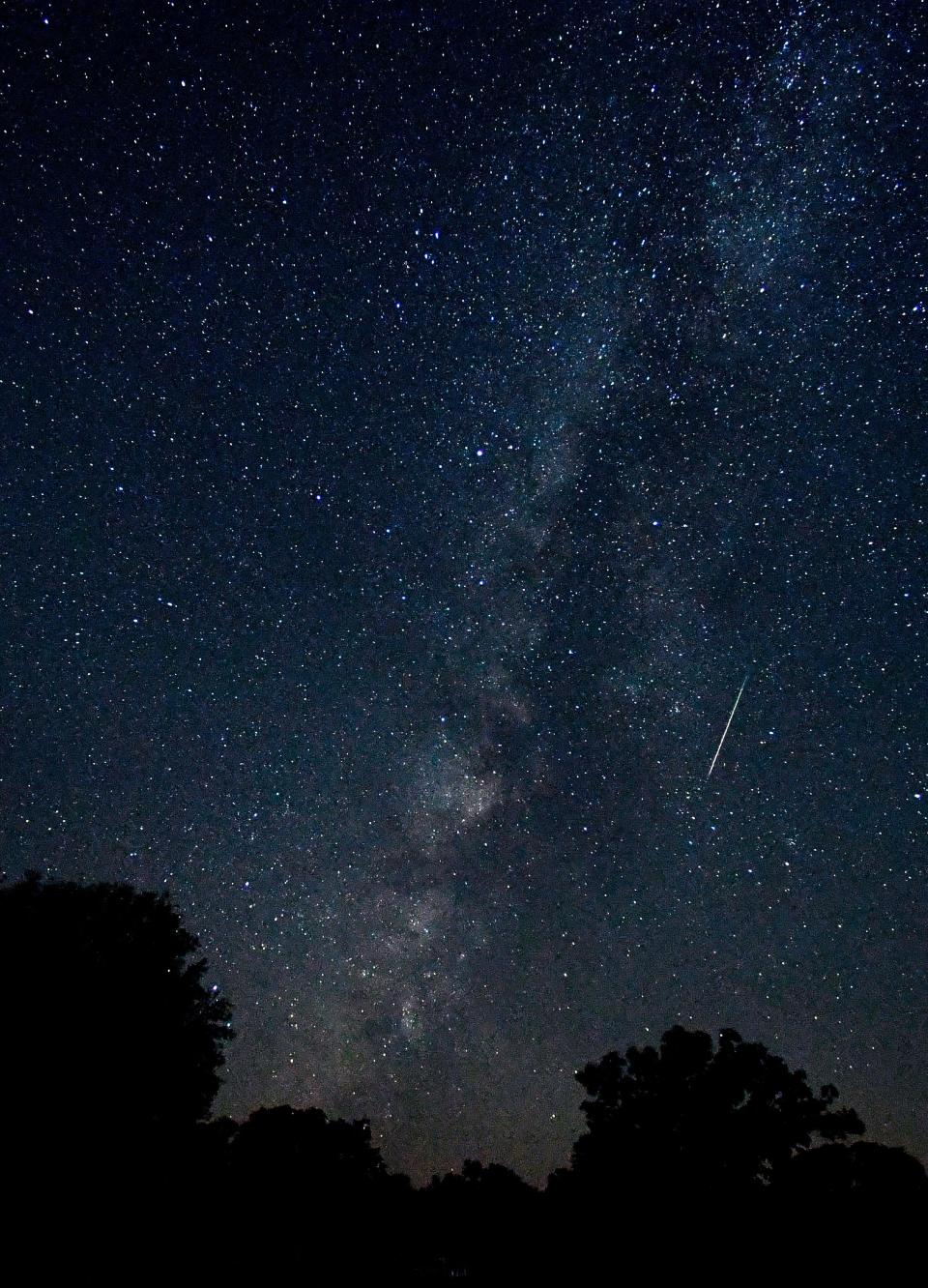Northern Taurid meteor shower hits peak activity this week: When and where to watch
Stargazers who missed the peak of the first branch of the Taurid meteor shower have another opportunity to witness a celestial display best known for the fireballs it can send hurtling through the sky.
Famously slow and long-lasting, Taurid meteors move across the sky at about 65,000 miles per hour – a fraction of the whizzing 148,000 mph meteors of the Orionid shower. That's part of the reason that Taurids haven't earned the hype of the like of the Orionids, considered the most beautiful of the meteor showers, or the Perseids, lauded as the best altogether.
But what makes both the Northern and Southern branches of the Taurids notable is the increased reports each year of fireballs, large explosions of light and color, associated with the meteor shower when it becomes most visible for several weeks late in the year.
Though the southern branch of the Taurids have already peaked, here's when and how spectators can still catch the best of the northern branch's activity.

How to see more auroras: Amid solar maximum, northern lights should flourish
When can you see the Northern Taurid meteor shower?
Taurid meteors can be seen when the constellation Taurus is above the horizon between September and November, according to NASA.
While the Southern Taurids, active each year between Sept. 23 and Dec. 8, already hit their peak last week, the Northern Taurids, active Oct. 13-Dec. 2 will be at their best Monday and Tuesday.
Lasting for weeks, the Taurid meteor streams tend to be slow moving with higher visibility compared to other meteor showers like the Orionids and Perseids, according the American Meteorological Society.
Even at their peak, neither the Southern nor Northern branches of the Taurid meteor stream are particularly frequent, producing only about five meteors an hour.
But the meteors they do produce are famously big and bright, leading to an increase in fireball activity when they're active at the same time, the American Meteorological Society says.
How to watch the Taurids
The Taurids, which come from the approximate direction of the Taurus constellation, are visible practically anywhere on Earth with the exception of the South Pole.
The best time of day to see the activity tends to be after midnight and before dawn. That's when the moon won't interfere with the display and the Taurus constellation, which is where the meteors seem to emerge – or radiate, according to Earth Sky, a website devoted to astronomy and Earth sciences.
Located northeast of the Orion constellation, Taurus can be identified by finding the bright red star known as Aldebaran and the dipper-shaped star cluster Pleiades. And as long as stargazers are in a dark location, equipment like telescopes and binoculars shouldn't be necessary to glimpse a shooting star.
"Hunting for meteors, like the rest of astronomy, is a waiting game, so it's best to bring a comfy chair to sit on and to wrap up warm as you could be outside for a while," according to Royal Museums Greenwich.
What causes the Taurid meteor showers?
Meteor showers occur when Earth passes through dusty debris trails left by comets and other space objects as they orbit the sun. The debris – space rocks known as meteoroids – collides with Earth's atmosphere at high speed and disintegrates, creating fiery and colorful streaks in the sky, according to NASA.
Those resulting fireballs, better known as "shooting stars," are meteors. If meteoroids survive their trip to Earth without burning up in the atmosphere, they are called meteorites, NASA says.
Astronomers believe the meteors produced by both Taurid streams are debris left behind by Encke’s comet.
Thought by some astronomers to be a piece of a larger comet that broke up tens of thousands of years ago, Encke has the shortest orbital period of any known comet within the solar system, taking 3.3 years to orbit the sun.
Each time the comet Encke returns to the inner solar system, its comparatively small nucleus sheds ice and rock into space to create a vast debris stream.
The debris stream is dispersed across such a large swath of space that it takes Earth a lengthy time to pass through it. That's why we see two segments of the same debris cloud, according to Royal Museums Greenwich: the Northern Taurids and the Southern Taurids.
Eric Lagatta covers breaking and trending news for USA TODAY. Reach him at [email protected]
This article originally appeared on USA TODAY: Northern Taurid meteor shower hits 2024 peak: When, where to see it
Solve the daily Crossword

